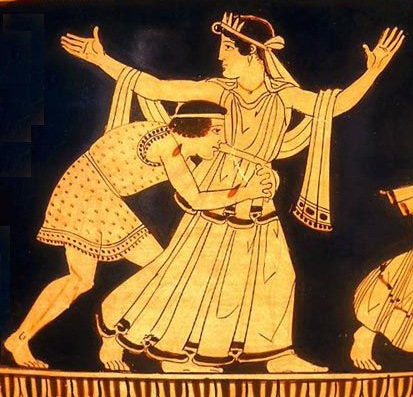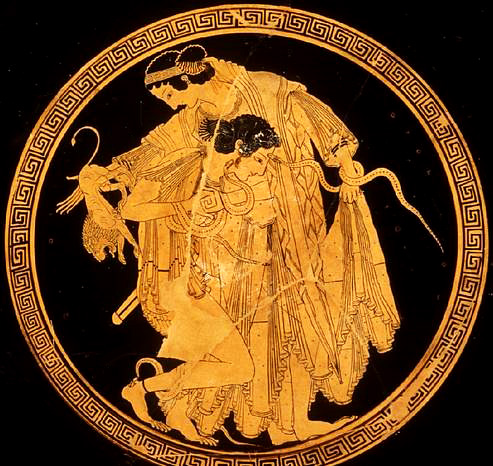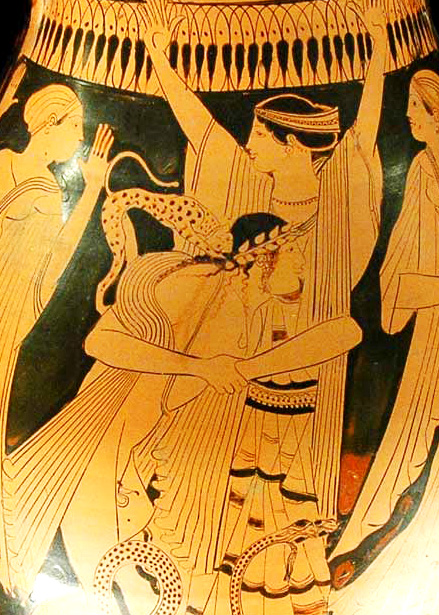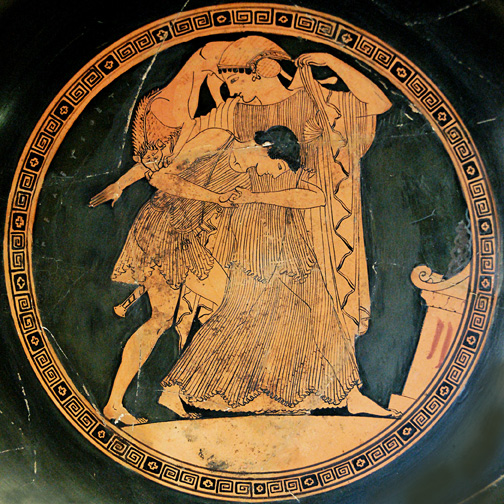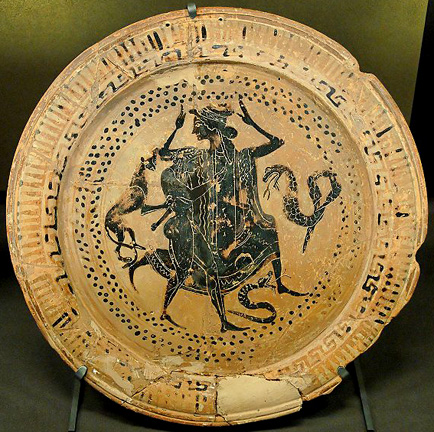Art celebrating rape as male conquest... Max Dashu
Peleus' rape of Thetis was a wildly popular theme in Greek art
Peleus seizes the resisting nereid Thetis. Zeus lusted after Thetis, but feared a prophecy by the oracular goddess Themis that the son of Thetis would be greater than his father. Wanting to her to marry a mortal so that her son would be less powerful than himself, Zeus pressed Peleus to marry Thetis, but she refused. Then Peleus took her by force.
The centaur Chiron advised Peleus to attack Thetis as she slept, holding her in a tight grip through all her shape-shifting attempts to escape. Peleus found her sleeping in one of her favorite sea caves, and grabbed her. Thetis turned herself into flame, water, a raging lioness, and a serpent, but was unable to break free.
Thetis throws up her arms while her lion and serpent aspects bite and thrash, trying to release the abductor's grip. This scenario has female divinity overcome by mortal manhood. How far the goddess had fallen may be measured by stories (in the Iliad and elsewhere) in which she saved Zeus, Hephaestus, and Dionysos.
Here the divine Thetis towers over the boyish mortal Peleus, who is again attacked by her lion. How is it that he could ever overcome her, she who once released Zeus from chains? The myth of her struggle with Peleus has numerous analogues in world folklore: a mortal man takes a spirit-woman by force; she lives with him for a time (often he takes her animal-skin, like the selkie or samodiva faeries), and bears a child. Then some event angers her, and she leaves forever (though often returning to visit her child).
In the case of Thetis, every night she burned away the mortality of her son Achilles, and every day anointed him with ambrosia. One night Peleus came across her holding the child to the fire and cried out, breaking the spell (as happened to Demeter in another story). Furious, Thetis disappeared like a wind, and returned to the sea, never to return. (Not to Peleus, anyway.) Another story has her dipping Achilles in the underworld river Styx, holding him by his ankle, which became his only vulnerable spot. But...
... the further back in time we go, the more exalted Thetis appears. She is the creatrix in a 7th-century hymn by Alcman, who begins by laying out a path (poros) and marker (tekmor), then creates darkness, then the sun and moon.
Thetis was long worshipped in Laconia as an ancient xoanan (wooden plank icon). One of her priestesses, Cleo, was taken captive in war. Her captor's wife, Leandris, asked for her and then had a dream that instructed her to build a temple for Thetis and to set Cleo up as priestess, with the xoanan in a secret chamber. Thetis was still being revered there in the 2nd century, when Pausanias (3.14.4-5) wrote this account.
